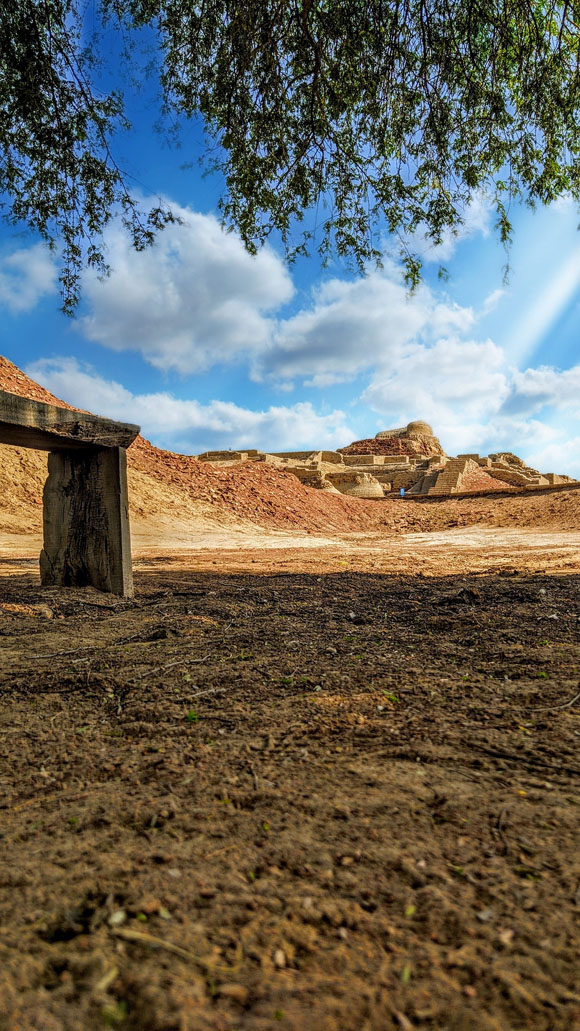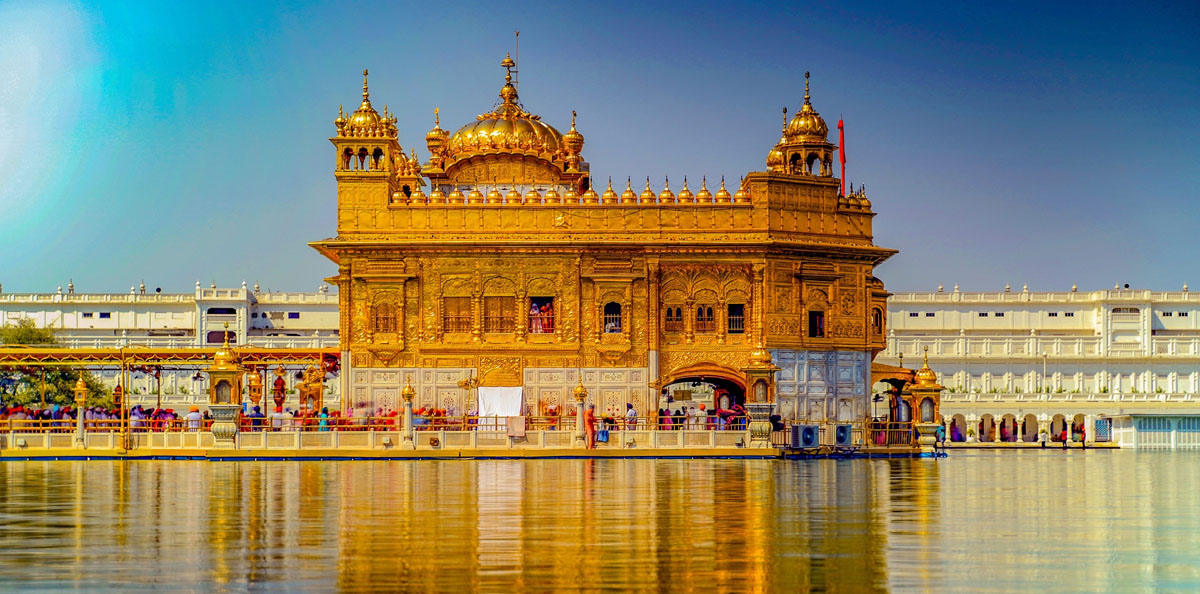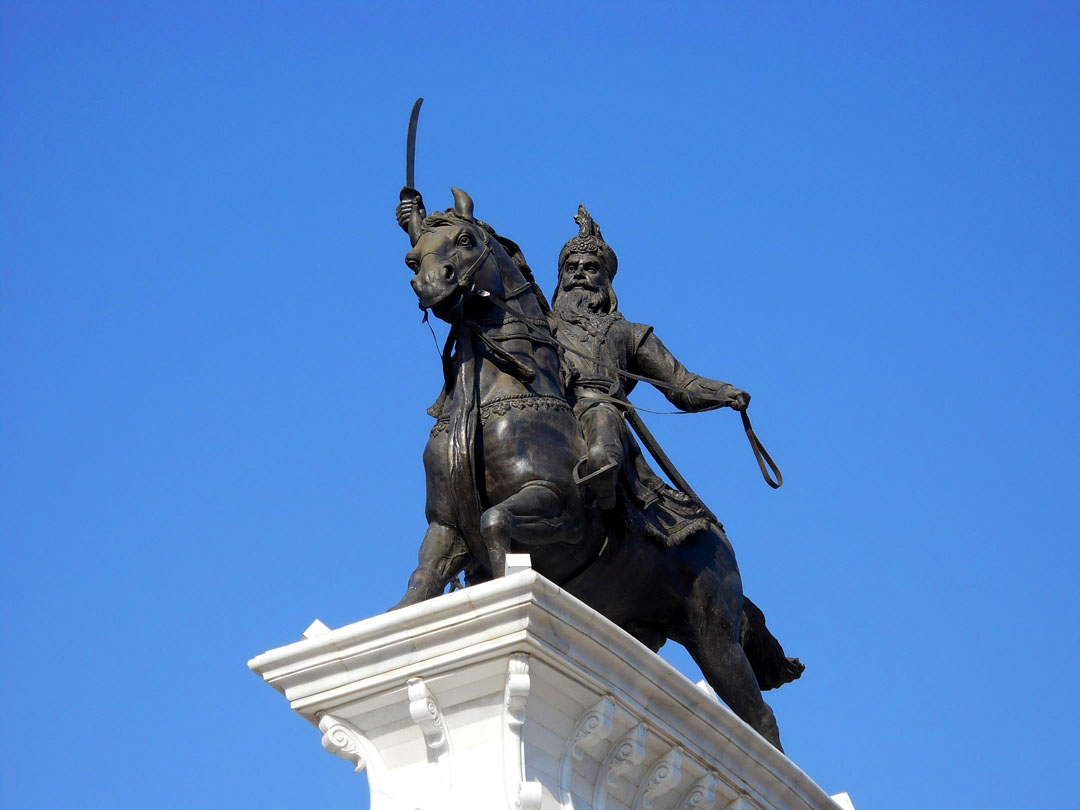The history of Punjab is characterized by its richness and complexity, spanning over thousands of years and being shaped by a multitude of civilizations, empires, and cultural influences. Presented below is a comprehensive overview of the historical developments in Punjab
Ancient Period
The northwestern region of the Indian subcontinent, known as Punjab, boasts a rich and diverse history, culture, and civilization that spans millennia. This region has been home to one of the world’s most ancient and sophisticated civilizations, thus earning its place as a cradle of human civilization in the Indian subcontinent.
The origins of Punjab’s ancient history can be traced back to the Indus Valley Civilization, which flourished between 3300 and 1300 BCE. This urban culture is recognized as one of the oldest in the world, and its advanced urban planning, architecture, and artistry are evident in several archaeological sites in Punjab, including Harappa and Mohenjo-Daro. The people of the Indus Valley were engaged in agriculture, trade, and crafts, demonstrating a remarkable level of technological and cultural advancement for their time.

The earliest known civilization in the Punjab region can be traced back to the Indus Valley Civilization, which thrived between 2500-1500 BCE. Notably, the cities of Harappa and Mohenjo-Daro, situated in present-day Punjab, were prominent centers of this civilization.
Aryan Invasions
The subject of Aryan invasions in the context of ancient Indian history, particularly in the region of Punjab, has been a matter of extensive scholarly discourse. The Aryan invasion theory posits that a group of Indo-European individuals known as the Aryans migrated into the Indian subcontinent, exerting a significant influence on its early civilization. According to this theory, it is believed that the Aryans entered India approximately around 1500 BCE and assimilated with the indigenous Dravidian population.
In the case of Punjab, a region situated in northern India and eastern Pakistan, it is commonly regarded as one of the primary entry points for the Aryan migration. It is believed that the Aryans entered the Punjab region through the northwest, traversing the Hindu Kush mountains and establishing settlements in the fertile plains of the Indus River.
It is crucial to acknowledge that the Aryan invasion theory has faced challenges and undergone revisions throughout the years. Some scholars advocate for a more gradual migration and integration of Indo-Aryan culture with the pre-existing cultures of the Indian subcontinent, rather than a sudden and violent invasion. This revised perspective is occasionally referred to as the Aryan migration theory.
The ongoing debate surrounding Aryan invasions and migrations encompasses varying viewpoints among scholars. The comprehension of ancient Indian history, including the history of Punjab, continues to evolve as new archaeological discoveries and research findings come to light.
The Mauryan Empire in Punjab
During the reign of the Mauryan Empire (circa 322–185 BCE), which was established by Chandragupta Maurya, Punjab was an integral component of the empire. The territorial expanse of Chandragupta Maurya’s empire extended from Bengal in the east to the western region of Punjab. His grandson, Ashoka the Great, is renowned for his pivotal role in disseminating Buddhism across India and other parts of the world. He instituted rock edicts throughout his empire, including in Punjab, to promote the principles of non-violence, religious tolerance, and social welfare.
The Gupta Empire in Punjab
The Gupta Empire (circa 320–550 CE) succeeded the Mauryan Empire and is often referred to as the Golden Age of ancient Indian history. However, the direct impact of the Gupta Empire on Punjab was relatively limited compared to the Mauryan era. The Gupta Empire was situated more towards central and northern India, and while its influence extended to various parts of the subcontinent, specific details about its governance in Punjab are not as extensively documented.
It is noteworthy that ancient Indian empires frequently operated under a decentralized system of governance, where regional and local rulers wielded significant power. Therefore, while Punjab was a constituent of these empires, the region also had its local rulers and chieftains who exercised a degree of autonomy. Historical records from these periods are sometimes limited and can be challenging to interpret, but they provide valuable insights into the rich cultural and political tapestry of ancient India.
Rise of Sikhism
- Early Development (15th-16th Century):
Sikhism was founded by Guru Nanak in the 15th century. Born in 1469 in the village of Talwandi, presently located in Pakistan, Guru Nanak preached the principles of equality, love, and devotion to one God. His teachings laid the foundation of Sikhism, and his travels and teachings attracted a following, leading to the establishment of a community of disciples. Guru Nanak was succeeded by nine other Gurus, each of whom contributed to the growth of Sikhism.
- Growth Under Guru ArjanDev (16th-17th Century):
The fifth Guru, Guru ArjanDev, compiled the sacred scripture of Sikhism, the Guru Granth Sahib, providing a central religious text for Sikhs and solidifying Sikh identity. Guru ArjanDev also oversaw the construction of the Golden Temple (Harmandir Sahib) in Amritsar, which became the holiest shrine in Sikhism.

- Challenges and Militarization (17th-18th Century)
Sikhs faced persecution under Mughal rule due to their resistance against forced conversions, leading to the militarization of the Sikh community under leaders like Guru Gobind Singh. Guru Gobind Singh founded the Khalsa in 1699, a community of baptized Sikhs who followed a strict code of conduct. This event, known as the Khalsa initiation, played a significant role in Sikh history.
- Consolidation and Sikh Kingdoms (18th Century)
In the 18th century, various Sikh chiefs and leaders organized themselves into a confederacy, establishing their authority in different regions of Punjab. This led to the formation of Sikh kingdoms, consolidating their power and influence in the region.
Mughal Empire
The Mughal Empire exerted a significant influence on the Punjab region, which is presently divided between India and Pakistan. Punjab, meaning “Land of Five Rivers,” was a fertile area situated in the northwestern portion of the Indian subcontinent. The Mughals, who originated from the Mongol lineage, established one of the most expansive and influential empires in the Indian subcontinent during the 16th and 17th centuries.
Under Mughal governance, Punjab flourished as a prosperous and culturally vibrant region. The Mughal emperors, particularly Akbar the Great (who reigned from 1556 to 1605), were renowned for their policies of religious tolerance and administrative reforms. Akbar’s administration fostered the growth of diverse cultures and religions, resulting in a period of relative tranquility and stability in Punjab.
The Mughals developed Lahore, the present-day capital of Pakistani Punjab, into a significant center for culture and commerce. Lahore gained renown for its architectural marvels, such as the Badshahi Mosque and the Lahore Fort, both of which are now recognized as UNESCO World Heritage Sites. Additionally, the city became a hub for arts, literature, and trade during the Mughal era.
However, in the 18th century, the Mughal Empire began to decline, and various regional powers, including the Sikhs, rose to prominence. The Sikh Empire, led by figures like Maharaja Ranjit Singh, emerged as a dominant force in Punjab during the early 19th century. Ultimately, the British East India Company defeated the Sikh Empire in the Anglo-Sikh wars and annexed Punjab in 1849.
This marked the conclusion of Mughal influence in the region, ushering in the era of British colonial rule in Punjab and other parts of India. Nevertheless, the impact of the Mughal Empire on Punjab’s culture, art, and architecture continues to be acknowledged and celebrated in the region’s rich heritage.
Sikh Empire
The Sikh Empire was a prominent empire in South Asia that existed from the early 19th century to the mid-19th century. It was founded by Maharaja Ranjit Singh in the early 19th century in the region of Punjab, which is now divided between modern-day India and Pakistan. The Sikh Empire was known for its military prowess, administrative reforms, and religious tolerance.

Ranjit Singh, the founder of the Sikh Empire, unified various Sikh factions and regions in Punjab under his rule in the early 19th century. He established a centralized administration, modernized the military, and promoted religious and cultural harmony. The empire’s capital was Lahore, which is now in modern-day Pakistan.
Under Ranjit Singh’s leadership, the Sikh Empire expanded its territories in northern India and parts of present-day Pakistan. The empire reached its peak during his rule, covering a significant portion of the Punjab region.
However, after Ranjit Singh’s death in 1839, the empire faced internal strife and external threats. The British East India Company took advantage of the instability and annexed Punjab in 1849 after the Second Anglo-Sikh War. This marked the end of the Sikh Empire, and Punjab became a part of British India.
The legacy of the Sikh Empire continues to be an important part of the cultural and historical heritage of the Punjab region, and Sikhism, the religion founded by Guru Nanak in the 15th century, remains a significant aspect of the region’s identity.
British Rule
After two Anglo-Sikh Wars, the British East India Company annexed Punjab in the mid-19th century. The Punjab region played a significant role in the Indian struggle for independence, with leaders like Bhagat Singh hailing from the area.
Post-Independence Period
Punjab, a region situated in the northern part of India, boasts a profound historical background that surpasses the era of independence in 1947. Following the attainment of independence, Punjab encountered formidable obstacles, notably the partition of India and Pakistan, which resulted in widespread violence and the displacement of millions of individuals. Presented below is a comprehensive overview of Punjab’s history in the post-independence era:
- Partition of Punjab (1947)
During the partition of India in 1947, Punjab underwent a division between India and Pakistan, precipitating immense communal unrest and the forced migration of millions along religious lines.
- Reconstruction of Punjab
Subsequent to the partition, Punjab in India confronted the arduous task of rebuilding itself. The state confronted challenges pertaining to the rehabilitation, both economically and socially, of those adversely affected by the partition.
- The Green Revolution
Punjab played a pivotal role in India’s Green Revolution, a period spanning the 1960s and 1970s, characterized by a remarkable surge in agricultural productivity due to the introduction of high-yielding seed varieties, modern irrigation techniques, and chemical fertilizers. During this time, Punjab emerged as the ‘Granary of India’, significantly contributing to the nation’s food production.
4 .The Sikh Movement
The state of Punjab has long been a prominent center of Sikhism. However, during the 1970s and 1980s, there was a notable increase in militancy within the region. This surge in militancy was driven by the demand for a separate Sikh state, known as Khalistan, which subsequently resulted in conflicts and violence within the area.
- Operation Blue Star (1984)
In an effort to eliminate militants who had taken refuge within the Golden Temple in Amritsar, the most sacred Sikh shrine, the Indian government executed Operation Blue Star. Unfortunately, this operation resulted in significant damage to the shrine and further exacerbated the tensions between the Sikh community and the Indian government.
- Anti-Sikh Riots (1984)
Following the assassination of Prime Minister Indira Gandhi by her Sikh bodyguards, widespread anti-Sikh riots erupted in Delhi and other parts of India. Tragically, thousands of Sikhs lost their lives during this period of violence, leaving a lasting scar on the nation’s collective conscience.
- Post-Conflict Period
After years of intense conflict, Punjab gradually began to stabilize. Substantial efforts were made to restore peace and foster economic development within the state.
Militancy
In the 1980s and early 1990s, Punjab faced a period of militancy, characterized by violent conflicts between Sikh separatists and the Indian government. The situation was largely resolved by the mid-1990s through a combination of military and political measures.
Today, Punjab is a prosperous Indian state known for its agricultural output, vibrant culture, and historical significance in Sikhism. The region’s history is a testament to its resilience and its enduring cultural and religious heritage.




